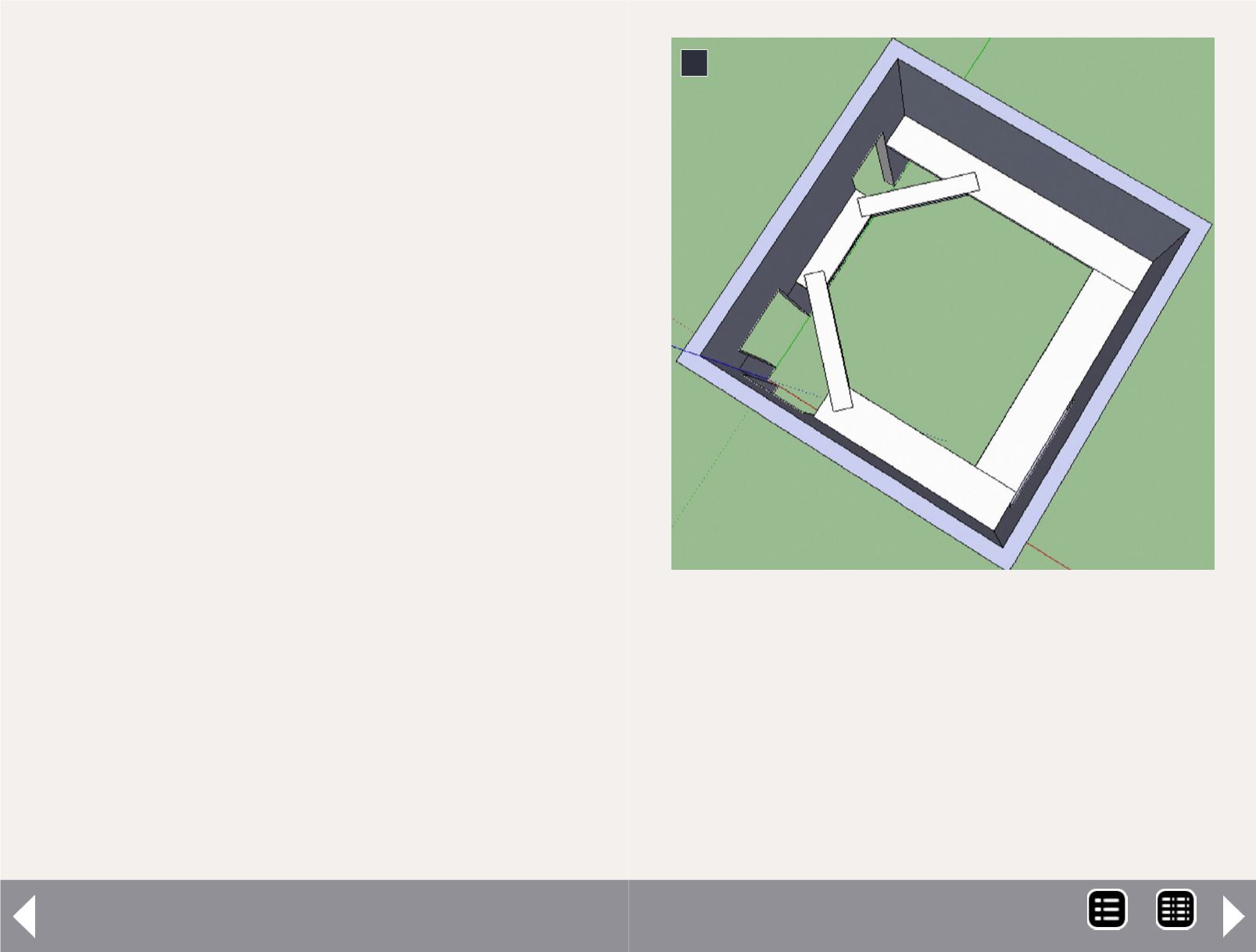
irreversibly bleaches and leaches materials at a molecular
level upon contact, decimating whatever resale your models
might have had in a matter of months or even weeks. Hence, it
should be avoided in the train room at all costs, even if it is just
a temporary layout.
You can either box or fill the window, depending on the design
of your curtain/blind assembly. Because I work the night shift,
my window is already covered with a piece of sheet foam against
the glass and a blackout curtain sandwiching the blinds against
the inside of the foam. In the past, I have gone so far as to use
sheet foam to simply box out the window with the curtains and
blinds in place. This negates the need for a storage space to save
them for when the room needs to be restored to its original con-
figuration. The layout is then unimpeded by the window.
Doors are a bigger problem because we cannot block them so
easily. A point to point layout nulls out the issue altogether,
but I fully believe it's simply more enjoyable to watch trains
move, regardless of operational scheme (or the lack thereof).
The longer your track is, the longer you can enjoy continuous
movement. A continuous loop thus enables a train to run for
an infinite length of time and distance, hence, it is the most
advantageous setup.
To accomplish this arrangement, we could utilize turnback
loops or duckunders, and as an amendment to duckunders,
removable bridges. Turnback loops require an amount of depth
into the room equivalent to twice your minimum radius. I want
as broad a mainline curve radius as possible, so loops are unde-
sirable. Hence, the three doors will be managed by using two
long, removable bridges.
The premise
My goal then is a shelf system consisting of 12" shelf brackets,
12" deep shelves and 2" Styrofoam at roughly 60" elevation,
Third Place Layout for $500 - 2
the height of my tallest furniture piece, in an arrangement that
encircles the room. The long span that is the window will require
a reinforcing beam set perpendicular and under the shelf, or it
will ultimately sag. The bridges themselves will be 2" Styrofoam,
with reinforcing layers affixed together with toothpicks and lami-
nated with white glue either above or below the base piece. A
single piece of 2" foam will show considerable deflection, but as
foam is built up in layers, it stiffens quite well.
2: Room and benchwork view from above in SketchUp.
2
MRH-Jul 2013


